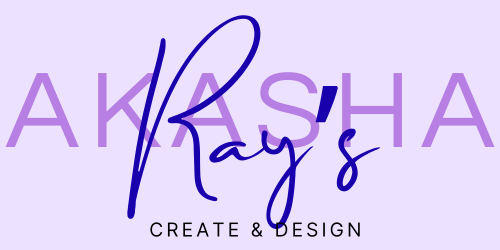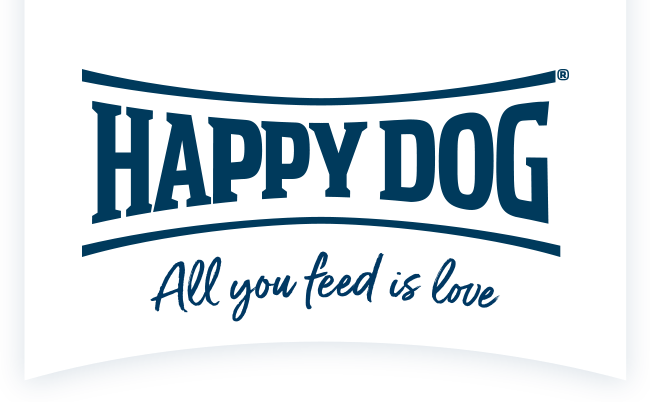Gut zu wissen/ Good to know
1. IMPFUNGEN
• Unverzichtbare Impfungen: Tollwut, Staupe, HCC, Parvovirose, Leptospirose
• Bedingt sinnvoll: Zwingerhusten, Borreliose, Welpensterben (für Züchter)
Grundimmunisierung
• 6.-8. Lebenswoche: Staupe, HCC, Parvovirose, Leptospirose (4-fach Impfung, SHPL)
• 10.-12. Lebenswoche: 4-fach Impfung + Tollwut
• 16. Lebenswoche: 4-fach Impfung + Tollwut
15. Lebensmonat: Staupe, HCC, Parvovirose, Leptospirose, Tollwut. Die Grundimmunisierung ist erst mit dieser Impfung abgeschlossen, erst danach gelten die verlängerten Impfintervalle!!!
Auffrischungsimpfung
• jährlich: Leptospirose
• alle 3 Jahre: 4-fach Impfung + Tollwut
Ab dem dritten Lebensjahr wird der Impfschutz durch eine Auffrischungsimpfung aufrechterhalten. Bei Auslandsreisen IMMER vorher zum Tierarzt.
2. KNABBERATTACKEN
Das Kaubedürfnis wird in den ersten Monaten – und ganz besonders während des Zahnwechsels – besonders groß sein. Möhren, Kohlrabi, Äpfel oder Kaffeeholz, afrikanische Kauwurzeln, Hirschgeweih oder Rinderhautkaurollen sind ein guter Knabberersatz und sorgen für gesunde und kalorienarme Ablenkung.
3. STUBENREINHEIT
Unsere Hunde sind schnell und problemlos mit den folgenden Tricks sauber geworden:
- Die ersten 7 bis 14 Tage (je nach Sturheit auch länger) ist es ratsam, den Welpen direkt neben sich am Bett in einer Transportbox, bzw. in einem Hundebett mit hohen Seitenwänden, schlafen zu lassen. So hört ihr den Welpen wenn er raus muss und er gewöhnt sich daran, sein Geschäft draußen erledigen zu müssen.
Im Alltag gilt. Der Welpe muss raus:
- ca. alle 2-3 Stunden
- nach dem Spielen
- wenn er sich gefreut hat
- nach dem Fressen
Einmal vor die Tür und ein von euch gewähltes Kommando, macht die Erleichterung in Zukunft für Hund und Mensch einfacher. Wenn das Geschäft erfolgreich DRAUßEN erledigt wurde, LOBEN BIS DER ARZT KOMMT! Ihr werden sehen, der Aufwand lohnt sich.
- Kommt es DRINNEN dann doch mal zu Malheur, sollte man sich am Alter orientieren. Vor allem in den ersten Tagen ist es für den Welpen, aufgrund der Umgewöhnung, noch sehr schwer alles auf einmal zu erfassen. Daher geht das eine oder andere Kommando bzw. ein Tadel etc. auch mal in das eine Ohr rein, aus dem anderen Ohr aber auch sofort wieder raus. Meine Hunde hatten eine Eingewöhnungsphase von 14 Tagen. Wenn Drinnen etwas passiert ist, Welpen holen, das Malheur zeigen (aber BITTE NICHT mit der Nase durchziehen) und dann raus gehen. 1 bis 2 Minuten reichen zur Verknüpfung. Macht der Welpe dann aber doch noch sein Geschäft, LOBEN BIS DER ARZT KOMMT!
Ist der Welpe jedoch schon eine Zeit lang bei euch und hat sich gut eingelebt, kann dann auch schon mal was strenger vorgegangen werden. Erledigt der Welpe beispielsweise sein Geschäft DIREKT vor deinen Augen und schaut dich dabei auch noch an, sollte hier der Hund korrigiert & dann sofort nach draußen gebracht werden.
4. ERZIEHUNG
Es gibt viele verschiedene Arten, Techniken, Einstellungen etc. zu diesem Thema und letzten Endes entwickelt jeder doch seine ganz eigene Methode. Trotzdem können ein paar Basics nie schaden:
- Das A & O in der Erziehung heißt BEWEGUNG, DISZIPLIN und STRENGE. Disziplin und Stenge haben jedoch nichts mit Gewalt oder Boshaftigkeit zu tun. Es geht darum an einem Strang zu ziehen und sich unter keinen Umständen, auch nicht von ach so herzzerreißenden Welpenäuglein, um den Finger wickeln zu lassen. Einigt euch mit allen Personen, die mit der Erziehung des Hundes zu tun haben werden, auf klare und einstimmige Kommandos und führt diese am Anfang mehrfach aus. Das bedeutet nicht dass du 5 Mal „Sitz“ sagen sollst, wenn der Welpe weiterhin in der Gegend herumsteht, sondern das ihr die Übungen mehrfach durchführt und erst aufhört, wenn ihr erfolgreich wart. Wiederholt die Übungen so lange, bis der Welpe die Übung verinnerlicht hat und es gilt natürlich bei jedem Gehorsam LOBEN BIS DER ARZT KOMMT!
- Was das Kommando „Sitz“ zum Beispiel angeht, halte ich persönlich viel davon die natürlichen Abläufe und Verhaltensweisen des Hundes zu nutzen. Schließlich können alle Hunde sitzen = SITZ, liegen = PLATZ, stehen bleiben = HALT etc. Auch die Welpen können das schon, sie können nur noch nicht das von euch gewählte Kommando mit dem natürlichen Ablauf verbinden. Wenn der Welpe sich also beispielsweise hinsetzt, fangt doch einfach damit an im richtigen Momet „Sitz“ zu sagen und ihn dann zu loben. Der Welpe erzieht sich „mehr oder weniger“ von selbst ^^.
- So oder so gilt jedoch immer GEDULD IST EINE TUGEND ^^
5. GESUNDHEIT
Da Hüftdysplasie (HD) leider ein sehr heikles Thema bei mittelgroßen und großen Hunden ist, sind ein paar wichtige Dinge zu beachten:
- glatte Böden sind grundsätzlich Gift für die wachsende Hüfte. Es muss nicht überall Teppich sein, aber "Rettungsinseln" auf der Laufrute des Hundes, helfen sehr die Hüfte zu schützen.
- So lange man den Welpen tragen kann, sollten Hürden wie Treppen, der Autoeinstieg und ähnliches mit der Hilfe des Menschen überwunden werden.
- Spaziergänge Stück für Stück verlängern. Fangt klein an & hört auf den Welpen ^^
- Wachstumsschübe bitte dringend beachten. Natürlich muss sich der Hund bewegen, aber zu viel des Guten, schadet auch.
- je mehr Kalorien der junge Hund im Wachstum zu sich nimmt, desto mehr belastet das Übergewicht das Wachstum. Gerade der Samojeden erhält mit seinem Futter genügend Kalorien um auf gesundem Wege groß und stark werden zu können.
- Hohe Sprünge möglichst vermeiden (beispielsweise vom Sofa etc.)
- Luposan Gelenkkraft-Konzentrat hilft beim Knochenaufbau und unterstützt die Körperpolizei.
Zudem sollten die Zähne regelmäßig auf Zahnstein kontrolliert werden. Wenn ihr das nicht selber machen wollt, lasst den Tierarzt regelmäßig draufschauen. Selbiges gilt für die Krallen- und Ohrpflege.
Wir wünschen euch viel Spaß und jede Menge besondere und wundervolle Momente mit eurem neuen Familienmitglied.
In English please ^^
1. VACCINATIONS
• Essential vaccinations: rabies, distemper, HCC, parvovirus, leptospirosis
• Conditionally useful: kennel cough, Lyme disease, puppy deaths (for breeders)
Basic immunization
• 6-8 Week of life: distemper, HCC, parvovirus, leptospirosis (4-fold vaccination, SHPL)
• 10-12 Week of life: 4-fold vaccination + rabies
• 16th week of life: 4-fold vaccination + rabies
15th month of life: distemper, HCC, parvovirus, leptospirosis, rabies. The basic immunization is only completed with this vaccination, only then do the extended vaccination intervals apply!
Refresh vaccination
• annually: leptospirosis
• every 3 years: 4-fold vaccination + rabies
From the age of three, vaccination protection is maintained by a refresh vaccination. AND ALWAYS see the vet before traveling in foreign countries.
2. TEETH-ATTACKS
The impulse to chew will be particularly grow in the first few months - and especially during the change of teeth. Carrots, kohlrabi, apples or coffee wood, african chewing roots, deer antlers or dried beefskin are good substitutes for snacks and provide healthy, low-calorie diversion.
3. Becoming a dry dog
Our dogs got clean quickly and easily using the following tricks:
For the first 7 to 14 days (longer depending on stubbornness), it is advisable to let the puppy sleep next to you on the bed in a box or in a dog bed with high side walls. So you can hear the puppy when he needs to go out and he gets used to having to do his business outside.
During the daily routine the puppy has to go out:
- every 2-3 hours
- after playing
- when he was very happy
- after eating
Directly going outside and a special command makes it much easier in the future for your dog and even for you to ending business quick. If the business is successfully done OUTSIDE, PRAISE HOW MUCH YOU CAN! You will see that the effort is worth of it.
If there is a mishap INSIDE, you should orientate yourself to the age of you puppy. Especially in the first few days it is very difficult for the puppy to deal with the new situation. Therefore some command goes into one ear inside and immediately out of the other ear. My dogs had time to feel home of around 14 days. If something happens inside, get the puppy, show the mishap (but PLEASE DO NOT pull his nose through the mishap) and then go outside. 1 to 2 minutes are enough to get the message. But when the puppy does the business, PRAISE HOW MUCH YOU CAN!
However, if the puppy has been with you for a while and has settled in well, you sometimes need to be a little stricter. For example, if the puppy does the business DIRECTLY in front of your eyes and looks at you at the same time, the dog should be dispraised & then taken outside immediately.
4. EDUCATION
There are many different ways, techniques, attitudes etc. for this topic and in the end everyone develops their own way. Nevertheless, a few basics can never be wrong:
The basic in education is MOVEMENT, DISCIPLINE and STRENGTH. Discipline and rigor have nothing to do with violence or malice. It's about that the humans need to go the same way and be clear in what you want even when the oh-so-heart-wrenching puppy eyes melting you to the bones. Find one way to teach your puppy with clear and easy commands and train one lesson many times. This does not mean that you should say “sit” 5 times if the puppy is still standing but you need to repeat the exercises several times and only stop when you are successful. Repeat the exercises until the puppy really knows what you want from him and of course, by every obedience, OUTSIDE, PRAISE HOW MUCH YOU CAN!
As for the command “sit”, for example, I personally think a lot about using the dog's natural processes and behavior. All dogs can sit = SIT, lie = LAY DOWN, standing calm = STOP and so on. Even the puppies can do that, they just can't combine the command you have chosen with that natural process. So when the puppy sits down, just start saying "sit" in the right moment and then praise him. The puppy will be educated "more or less" by himself ^^.
However the most important rule is PATIENCE IS A VIRTUE!
5. HEALTH
Since hip dysplasia (HD) is unfortunately a very sensitive issue by medium and large dogs, there are a few important things to keep in mind:
- smooth floors are basically poison for the growing hips. There doesn't have to be carpet everywhere, but "life rafts" on the dog's running way help a lot to protect the hips.
- as long as you can carry the puppy, try to give him a help by stairs, going into the car and so on.
- Make the walks longer just step by step. Start small & listen to the puppy ^^
- please pay attention to the periods of growth. Of course the dog has to move, but too much is never good.
- the more calories the young dog gets during periods of growth, the more the excess weight is stressing the body to grow healthy. Especially the Samoyed receives enough calories from his food to be able to grow tall and strong in a healthy way.
- avoid high jumps as much as possible (for example from the couch, etc.)
- Luposan helps a lot by building bones in a healthy way.
Also the teeth should be checked from time to time. If you don't want to do this by yourself, let the vet check it out regularly. The same for claws and ears.
We wish you a lot of fun and lots of special and wonderful moments with your new family member.














